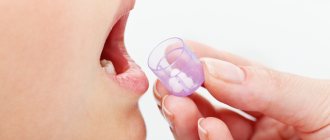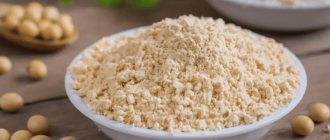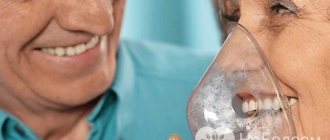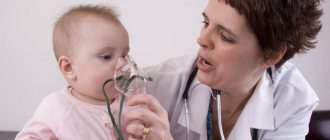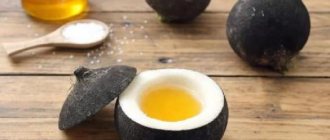Inhalation is an excellent way to treat respiratory diseases. For a simple procedure, convenient home medicine devices have been invented - inhalers or, in other words, nebulizers. Let's talk about their features.
- How does inhalation work?
- Types of inhalers-nebulizers
- How to choose an inhaler
- Popular brands
Inhalation is useful both for the treatment and prevention of diseases of the respiratory system. This is an effective way to deliver medications directly to the upper and lower respiratory tract.
Nebulizers are divided into:
- compressor;
- ultrasonic;
- mesh nebulizers.
Compressor nebulizers
produce a medicinal cloud due to the action of the compressor. Typically, compressor nebulizers have a larger size and weight compared to ultrasonic ones. One of the main disadvantages is considered to be the noise that the compressor makes during operation. At the same time, the advantage of compressor nebulizers is the ability to use almost all types of medicines.
Ultrasonic nebulizers
have a compact size, light weight and almost silent operation of the ultrasonic unit. A significant disadvantage is that a wide range of medications cannot be used in ultrasonic inhalers: the use of antibiotics and hormones is prohibited, since ultrasound destroys drug molecules. Their use in this case will not provide a therapeutic effect.
Mesh nebulizers.
This technology allows inhalations to be performed at any angle, for example, for a bedridden patient. Inhalers have the smallest size and weight. These devices are very convenient for people leading an active lifestyle. The nebulizer mesh easily fits even in a woman’s purse.
Nebulizer therapy has advantages over other types of inhalation therapy:
- It can be used at any age, since the patient is not required to adjust his breathing to the operation of the device and at the same time perform any actions, for example, pressing the canister, holding the inhaler, etc., which is especially important in young children.
- The absence of the need to take a strong breath allows the use of nebulizer therapy in cases of severe attacks of bronchial asthma, as well as in elderly patients.
- Nebulizer therapy allows the use of drugs in effective doses without side effects.
- This therapy provides a continuous and rapid supply of medication using a compressor.
- It is the safest method of inhalation therapy, since it does not use, unlike metered-dose aerosol inhalers, propellants (solvents or carrier gases).
- This is a modern and comfortable method of treating bronchopulmonary diseases in children and adults.
How does inhalation work?
There is a classic inhalation method. The basis of this process is heating water to the state of steam, which is used to treat inflamed areas of the throat. This purely physiotherapeutic principle is still used in steam inhalers. Modern methods used in nebulizers are aimed at supplying not just warm steam, but special medications. They work like this:
- the medicinal solution is poured into a special reservoir chamber;
- the inhaler converts liquid medicine into an aerosol, preserving its beneficial properties;
- it enters the tube and is inhaled through special nozzles for the mouth or nose;
- This is how the medicine, in the form of fine particles, enters the site of inflammation.
The use of the device allows you to reduce the dose of medication, making the treatment less aggressive and more gentle.
The nebulizer can be used by the whole family – even small children and infants. The optimal way to treat at home: without hospitalization or visiting a clinic for outpatient procedures.
What diseases can be treated with a nebulizer?
The drug sprayed by an inhaler begins to act almost immediately, which makes it possible to use nebulizers, first of all, for the treatment of diseases that require immediate intervention - an attack of bronchial asthma, allergies.
Another group of diseases for which inhalations are simply necessary are chronic inflammatory processes of the respiratory tract, such as chronic rhinitis, chronic bronchitis, bronchial asthma, chronic broncho-obstructive pulmonary disease, cystic fibrosis, etc.
But their scope of application is not limited to this. They are good for the treatment of acute respiratory diseases, laryngitis, rhinitis, pharyngitis, fungal infections of the upper respiratory tract, and the immune system.
Inhalers help with occupational diseases of singers, teachers, miners, and chemists.
How to choose an inhaler
Among the parameters that you should pay attention to when purchasing a suitable inhaler, we highlight the following:
- particle size and range control;
- noise level;
- tank volume and performance;
- availability of additional functions and parts.
Particle size and range control
The quality of the nebulizer depends on the size of the microparticles obtained during the breakdown of the drug. The depth of penetration of the medicine into the respiratory tract depends on it: the smaller the microparticles, the deeper the medicine will penetrate and the larger the surface of the therapeutic effect will be.
Thus, nebulizers capable of creating an aerosol with particles 5-8 microns in size are suitable for the treatment of diseases of the nasopharynx (sore throat or rhinitis), i.e. for the upper respiratory tract. Particles of 1-3 microns are able to “reach” the lower respiratory tract and treat, for example, inflammatory processes in the lungs. The optimal value for a home inhaler will be its ability to create an aerosol with a size range from 2 to 8 microns.
It’s even better if there is a hardware option to select the required particle size value. This way you can configure the inhaler for the greatest therapeutic effect for various diseases or for prevention.
Noise level
When purchasing an inhaler for the treatment of young children, it is recommended to choose a device that does not make much noise. The child should not be afraid of the inhaler.
Mesh inhalers have proven themselves best in terms of low noise: their noise level is about 20 dB. Ultrasound devices can be used if there is no conflict with the medication being used.
For additional children's comfort and interest in the procedure, many manufacturers produce inhalers in the form of toys. Bright colors and distinctive patterns will distract the child during the procedure.
Tank volume and performance
Inhalers often use a glass as a reservoir chamber. A tube is connected to it to supply a stream of air. The volume of the reservoir should be sufficient for one procedure (different for different drugs), since its interruption is not advisable.
The optimal volume of medication differs depending on the type of device:
- compression – 10-12 ml;
- ultrasonic – 8-10 ml;
- membrane – 7-9 ml.
The speed of aerosol formation and its spraying are also important. The time and quality of the therapeutic procedure depends on the performance indicator. Nebulizers operating with a spray rate of about 0.1 ml/min cope with their tasks most efficiently.
It is worth considering this indicator of the device when purchasing a nebulizer for a child, since the difference in the duration of the procedure (10 or 20 minutes) is significant for them.
Availability of additional functions and parts
It is convenient if the inhaler is portable - it can be powered by batteries or a built-in battery. It is best to buy a portable device if you have asthma or frequent cases of suffocation - the inhaler will be at hand even on a long trip.
It is better that the selected inhaler comes with various nozzles for administering the drug: through masks (for children and adults), mouthpiece tubes for inhaling by mouth, and nasal nozzles for treating nasal cavities.
This makes it easier to choose an inhalation method for various diseases and the age of the patient.
Sometimes nozzles are used as a particle dispersion regulator: some are better suited for the treatment of diseases of the nasopharynx, others - of the lower respiratory tract.
It is convenient if the inhaler has a valve that stops the flow of medication during exhalation. This allows you to save medicine, since it is supplied only during inhalation.
What medications can be used in a nebulizer.
For nebulizer therapy, there are special solutions of drugs that are produced in bottles or plastic containers - nebulas.
For nebulizer therapy the following can be used:
- mucolytics and mucoregulators (drugs to thin sputum and improve expectoration);
- bronchodilators (drugs that dilate the bronchi).
- glucocorticoids (hormonal drugs with multifaceted effects, primarily anti-inflammatory and decongestant);
- cromones (antiallergic drugs, mast cell membrane stabilizers);
- antibiotics;
- alkaline and saline solutions: 0.9% saline solution.
Your attending physician should prescribe the drug and tell you about the rules for its use. He must also monitor the effectiveness of treatment.
Not recommended for use with nebulizers:
All solutions containing oils, suspensions and solutions containing suspended particles, including decoctions and infusions of herbs, prednisolone, dexamethasone, as well as solutions of aminophylline, papaverine, platiphylline, diphenhydramine and the like, as not having points of application on the mucous membrane of the respiratory tract ways.
This is important to know!
- Inhalation of substances with a pungent odor can cause spasm of the small bronchi, as well as laryngospasm, in children under 5 years of age. This happens due to the special structure of the respiratory tract in children.
- Vapors from herbs are a strong allergen and can cause severe allergic reactions, accompanied by severe breathing problems.
- Inhalation of hot steam is prohibited in pediatrics, as it can cause burns to the respiratory tract.
- Inhalation of eucalyptus vapors and other similar oils is not related to the treatment of ARVI.
- Essential oils cannot be used for inhalation with hot steam, much less pour them into a nebulizer. At a minimum, because the liquid is crushed into tiny particles that penetrate into the farthest parts of the respiratory tract. At most, because this is an oil that, due to splitting into small particles, can settle on the surface of the bronchi in an even film, thereby causing mechanical blockage, which will lead to swelling of the lungs, the impossibility of gas exchange in them and death before the ambulance arrives.
- Due to the insufficient development of the child’s respiratory muscles, a full cough impulse cannot be realized and expel excess fluid, including sputum. This means that inhalations CANNOT BE CARRIED OUT FOR PREVENTION.
- The nebulizer may cause respiratory irritation.
- A nebulizer does not treat cough or runny nose in uncomplicated ARVI. A nebulizer is a method of delivering medicine to the lower respiratory tract, since it is impossible to deliver medicine there by other means.
- The effect is not given by inhalation, but by the medicine that was poured into the nebulizer and which was delivered to the destination.
- If the device is not disinfected properly, inhalation will become a source of bacterial contamination and respiratory tract infections.
Inhalations are possible at any body temperature and only as prescribed by a doctor. If inhalation is performed on a child, then you can distract him with cartoons, books, toys during the procedure, and also perform inhalation in his sleep.
Other selection options
So, when choosing an inhaler, you should pay attention to the main characteristics:
- Noise level – the compressor inhaler is the loudest;
- Particle size – the optimal indicator is considered to be 2-3 microns. Some models have a function for setting the desired size;
- Spray rate - the higher it is, the less time it will take for inhalation;
- Mobility – if you plan to use the device not only at home, you should choose a compact inhaler with a battery or batteries;
- Medicines used - Some medications are not suitable for certain types of inhalers.
It is advisable to make sure that the kit includes masks for adults and children, a mouthpiece, spare filters, and for the treatment of a runny nose - also a nasal cannula (nasal douche).
Features of using a nebulizer for dry and wet cough
The choice of medication depends on the underlying disease and the type of cough. The use of all medications in a child should be agreed with the attending physician (especially antibiotics, herbal tinctures, syrups).
Inhalations for dry cough moisturize the mucous membranes, thin the sputum, i.e. make cough productive. For this purpose, mucolytics, bronchodilators and anti-inflammatory drugs are prescribed; in the initial manifestations, saline solution or mineral water without gas is sufficient. The use of a nebulizer for a wet cough with expectorant, disinfectant and antiseptic drugs is aimed at quickly removing mucus from the bronchi.
Operating rules
- on the Med-magazin.ua website . Regardless of the principle of operation and configuration of the device, there are basic rules of use that are important to familiarize yourself with. The instructions included with the model describe in detail how to assemble the device. The following sequence of actions is almost the same:
1. Disinfect attachments (mask, mouthpiece, nasal cannula, etc.) to prevent transmission of infection, for which they are boiled or treated with a 3% hydrogen peroxide solution;
2. Pour the medicinal solution into the nebulizer chamber compartment;
3. Select the desired operating mode (if provided in the model);
4. Attach the nozzle;
5. Check the filter, make sure it is clean (should not be gray);
6. Connect to the network (if the model does not run on batteries);
7. Put on a mask (put a mouthpiece or other in your mouth);
7. Click on power;
8. Breathe as usual;
9. At the end of inhalation, disconnect the elements, rinse and dry.
